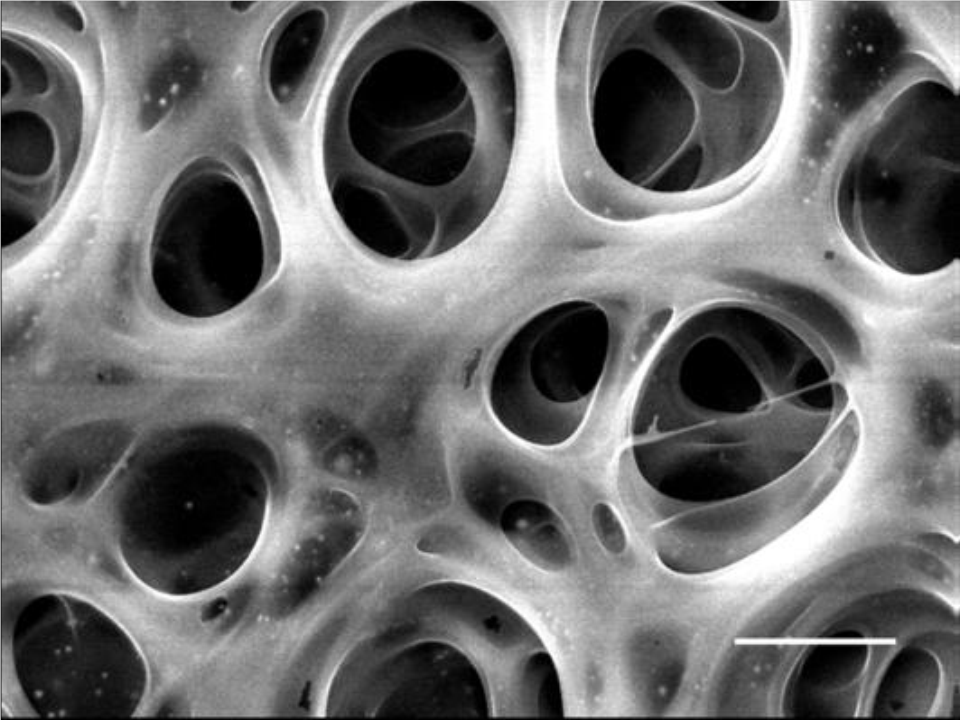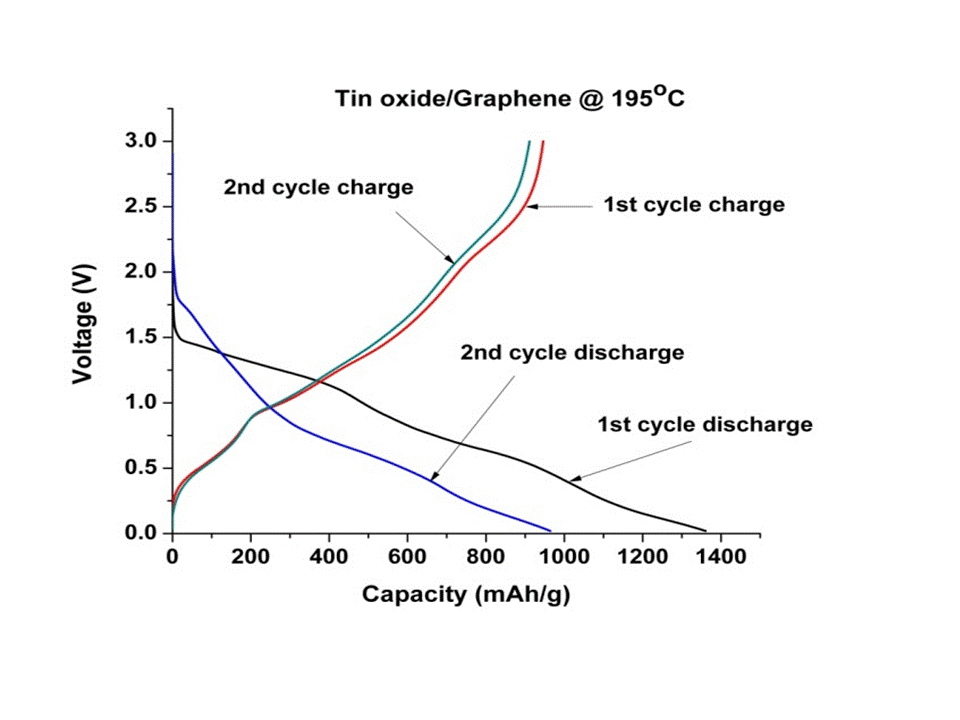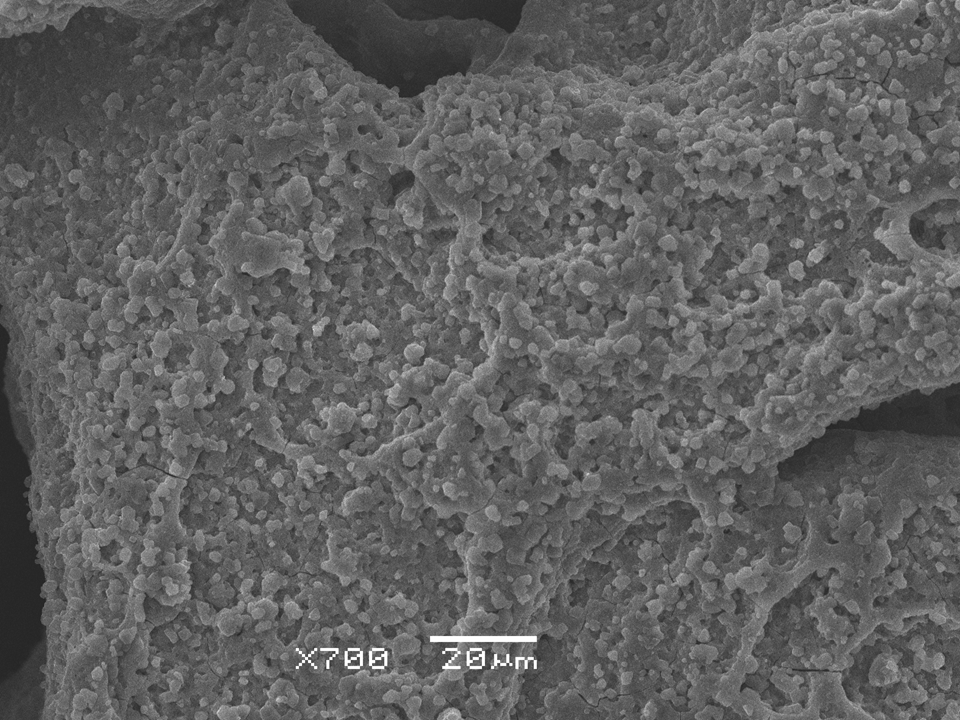www.acsprf.org
Reports: DNI1049301-DNI10: Fabrication and Investigation of Porous Tin Oxide Anodes for Li-Ion Micro Batteries
Chunlei Wang , Florida International University
The requirement of higher energy capacity microbatteries demands the exploitation of new substitute materials with higher energy capacity than traditional graphite. SnO2 has been considered as one of the most promising substitutes for the carbon anode in Li-ion batteries due to its high Li+ storage capacity. However, the practical application of SnO2 as anode is restricted by poor cyclability and rate capability due to large volume change during cycling, which can cause disintegration and electrical disconnection from current collector. In this project, we prepared and tested tin oxide anode films with a variety of porous morphologies using Electrostatic Spray Deposition (ESD) technique. Material characterization and electrochemical analysis were conducted in order to investigate the correlation between morphology and electrochemical performance and understand the underlying mechanism.
During the past funding year, we have focused our research on (1) synthesis of various porous SnO2 and NiO based anodes; (2) characterization of the material property and electrochemical property; (3) assembly and evaluation of battery coin cells; (4) understanding the current collector contribution to the whole cell performance; (5) synthesis and characterization of porous SnO2/multiwalled carbon nanotube (CNT) thin film composites; (6) synthesis and characterization of SnO2/graphene composite anodes; (7) synthesis and characterization of porous Sn/C composite structure; (8) synthesis and characterization of mesoporous silicon anodes prepared by magnesiothermic reduction for lithium ion batteries. We even extend our research into electrochemically activated carbon micro-electrode arrays for electrochemical micro-capacitors application. All these research efforts have significantly enhanced our understanding of fundamental issues regarding intrinsic properties of porous and fibrous tin based materials as anode for Li-ion batteries. Figure 1 shows the typical porous Sn-C composite anodes and its charge-discharge curves. In this work, a three-dimensional porous core-shelled Sn@carbon anode was fabricated by ESD technique followed by high temperature treatment. 3D porous structure and carbon shell were designed to buffer volume expansion/shrinkage of Sn lattice upon cycling and improve the electrical conductivity. After 315 cycles Sn@carbon anode exhibited high specific capacity of 638 mAh g-1 with a low capacity fade of average 0.11 mAh g-1 per cycle. Sn@carbon based anodes was demonstrated to have good potential for high performance lithium ion batteries application.
 |
 |
Figure 1. Left: a SEM image of a typical Sn-C composite anode; Right: charge/discharge curves of the first two cycles at the current density of 25 mA g-1 of Sn@carbon composite at post-heating treatment at 900 oC: (i) the first discharge, (ii) the first charge, (iii) the second discharge, (iv) the second charge, (v) the 50th discharge, (vi) the 50th charge, (vii) the 100th discharge, (viii) the 100th charge.
 |
 |
Figure 2. Left: Charge-Discharge profile of tin oxide/ graphene composites at 195 oC.
Right: SEM images of tin oxide/ graphene composite
Figure 2 shows charge-discharge profile and a SEM image of a SnO2/graphene anode. Three voltage plateaus can be found in the charge-discharge curves corresponding to the decomposition reaction (~1.25V), lithium alloy formation with tin (~0.5V) and carbon (~0.1V) during discharge. The first cycle discharge capacity of SnO2/graphene @ 195 °C was 1360 mAh/g with a columbic efficiency of 69%. During second cycle, the discharge capacity reduced to 964 mAh/g but with an increased columbic efficiency of 95%. We are currently summarizing the SnO2/graphene work and plan to publish it in the next couple of months.
We have published our research results on peer reviewed journals and presented our work in several conferences (MRS, ECS, etc). In addition, several papers are under review. Examples of our publications are listed below.
1. “Prospects of nanomaterials in Li-ion battery applications”, Xifei Li, Wei Chen, Abirami Dhanabalan, Chunhui Chen, and Chunlei Wang, Applications of Nanomaterials, Editors: Ramesh S. Chaughule and R.V. Ramanujan, American Scientific Publishers, in press, 2011.
2. Fractal nano-porous SiO2 films fabricated by sol-gel assisted electrostatic spray deposition
Xifei Li, Lin Gu, Kevin Bechtold, Abirami Dhanabalan, Chunlei Wang, Microporous & Mesoporous Materials, in press.
3. Enhanced Electrochemical Performance of Porous NiO-Ni Nanocomposite Anode for Lithium Ion Batteries
Xifei Li, Abirami Dhanabalan, Chunlei Wang, J. Power Source, 196 (2011) 9625-9630
4. Mesoporous Si Anodes Prepared by Manesiothermic Reduction for Lithium Ion Batteries
Wei Chen, Zhongli Fan, Abirami Dhanabalan, Chunhui Chen, Chunlei Wang, Journal of Electrochemical Society. 158 (9) (2011) A1055-A1059
5. Heat treatment effect of the Ni foam current collector in lithium ion batteries
Tae Kwon Kim, Wei Chen, Chunlei Wang, Jounral of Power Source, 196 (2011) 8742-8746
6. Binder-free porous core-shell structured Ni/NiO configuration for application of high performance lithium ion batteries
Xifei Li, Abirami Dhanabalan, Kevin Bechtold, Chunlei Wang*, Electrochem.Commun, 12(9), 2010, 1222-1225
7. Integration of Carbon Nanotubes to C-MEMS for On-chip Supercapacitors
Wei Chen, Majid Beidaghi, Varun Penmatsa, Wenzhi Li, Chunlei Wang, IEEE nanotech, vol 9(6), 2010, 734-740
8. Porous SnO2/CNTs Composite Anodes: Influence of Composition and Deposition Temperature on the Electrochemical Performance
Abirami Dhanabalan, Yan Yu, Xifei Li, Wei Chen, Kevin Bechtold, Lin Gu, Chunlei Wang, Journal of Materials Research, 25(8), 2010, 1554-1560
9. Electrochemical Activated 3D C-MEMS Based Supercapacitors
Majid Beidaghi, Wei Chen, Chunlei Wang, J. Power Source, 196 (2011) 2403-2409
In addition to our research outcome, this project has big impact on training and education of next generation workforce in energy field. Two postdoctoral researchers, 4 graduate students and 3 undergraduate students were involved in this project. During summer 2010 and 2011, the PI has also host 4 high school students as interns working in the PI's lab. Moreover, ECS student chapter at FIU was established during last funding year. The ECS chapter has actively involved in many outreach activities, such as: high school visits, open house, showcase in Science museum, etc.
